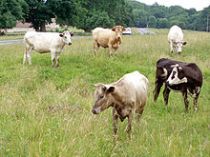 It is generally understood in economics that, as the price of a good increases, the demand for that good decreases. This principle can also be integrated into the world of sustainable transportation. If you make a segment or a whole mode of transportation more expensive, people will be less inclined to take a trip on that segment or mode. Transportation engineers use pricing in a number of different ways to do just that: limit the number of trips.
It is generally understood in economics that, as the price of a good increases, the demand for that good decreases. This principle can also be integrated into the world of sustainable transportation. If you make a segment or a whole mode of transportation more expensive, people will be less inclined to take a trip on that segment or mode. Transportation engineers use pricing in a number of different ways to do just that: limit the number of trips.
One aspect of our current transportation system that is not sustainable is the congestion that our roads produce. Too much time and fuel are wasted while sitting in traffic and doing nothing. Congestion-free pricing is a way that some cities are choosing to combat this lack of efficiency. This method institutes a fee to drivers who use a certain stretch of road, at a certain time when that stretch is usually congested. The effect of this is that some people avoid using this particular segment at that time by car if it can be avoided. The rest of the travelers deem the trip necessary enough to pay the charge. The price is engineered so that the traffic on the road is low enough that the congestion is reduced to a point where the road is efficient again.
 Another way that engineers typically use pricing to influence the way that the system is used is through parking fees and fines. By instituting a charge or a fine for people who park in a certain area, an engineer can influence how many people use cars in a certain area. Again, this makes the entire trip more expensive, so that this mode of transport is less attractive. An example of this would be here at Lafayette. In order to limit the number of cars on campus, the school charges a significant amount of money for parking, and fines anyone who parks here illegally. Of course some people will pay this, either because they have enough money or they absolutely need it. Many people, however, will be dissuaded from bringing cars.
Another way that engineers typically use pricing to influence the way that the system is used is through parking fees and fines. By instituting a charge or a fine for people who park in a certain area, an engineer can influence how many people use cars in a certain area. Again, this makes the entire trip more expensive, so that this mode of transport is less attractive. An example of this would be here at Lafayette. In order to limit the number of cars on campus, the school charges a significant amount of money for parking, and fines anyone who parks here illegally. Of course some people will pay this, either because they have enough money or they absolutely need it. Many people, however, will be dissuaded from bringing cars.
One last way to effectively make our transportation system more sustainable is to put a price on pollution emissions. The advantages of such a tax would be that people would actually be taking responsibility for exactly what they contribute to the environment, and there would be a very real reason to stop producing this pollution. There are problems with this tax however. For one, there is the problem of what price to put on what emissions. The biggest hindrance in this method is an effective way to measure a car’s outputs. There are many factors that go into how much pollution a car produces, such as what kind of vehicle, and how it is maintained. Another problem is the method of measuring, and what privacy rights citizens should have. For instance, most people would not want their movements being monitored, but the main way to check emissions is by evaluating travel distance. There are some kinks to be worked out, but this method is where transportation pricing should be headed.
With all of these methods of pricing vehicles in order to limit trips and reduce congestion and pollution there is a question of social equity. The people who would gain the most would be the richest percentage, who will only have to pay a little more, and would benefit from parking, congestion free roads, and would still produce pollution while the poorest people would be the ones whose transportation would be affected. I agree problem needs to be addressed, and transportation engineers do take this into account, but I also believe that actions need to be taken in order for our systems to become more sustainable. Pricing is one option that makes sense by reducing inefficiencies, while also generating some revenue that can be put back into the transportation network.











